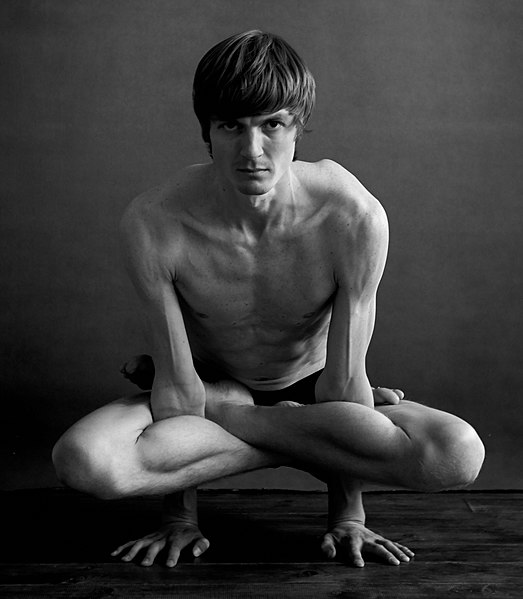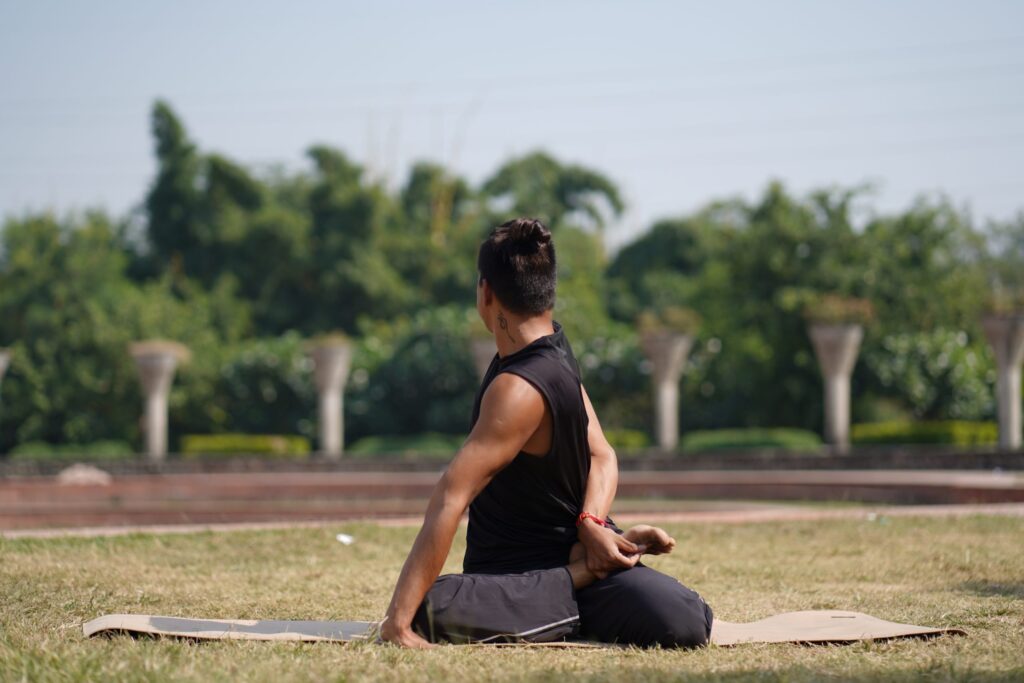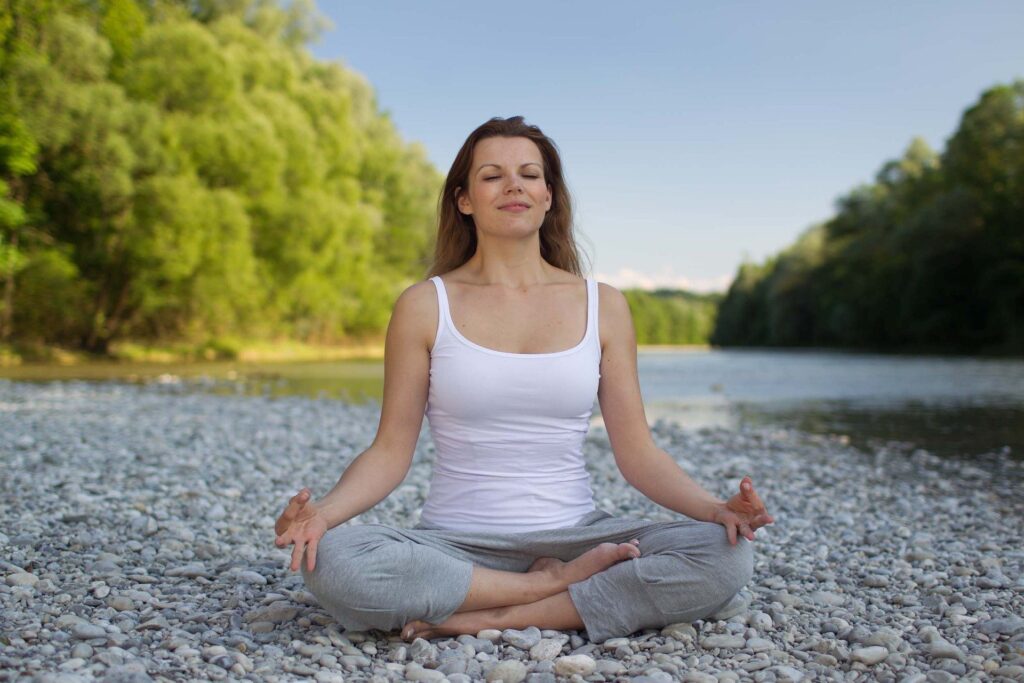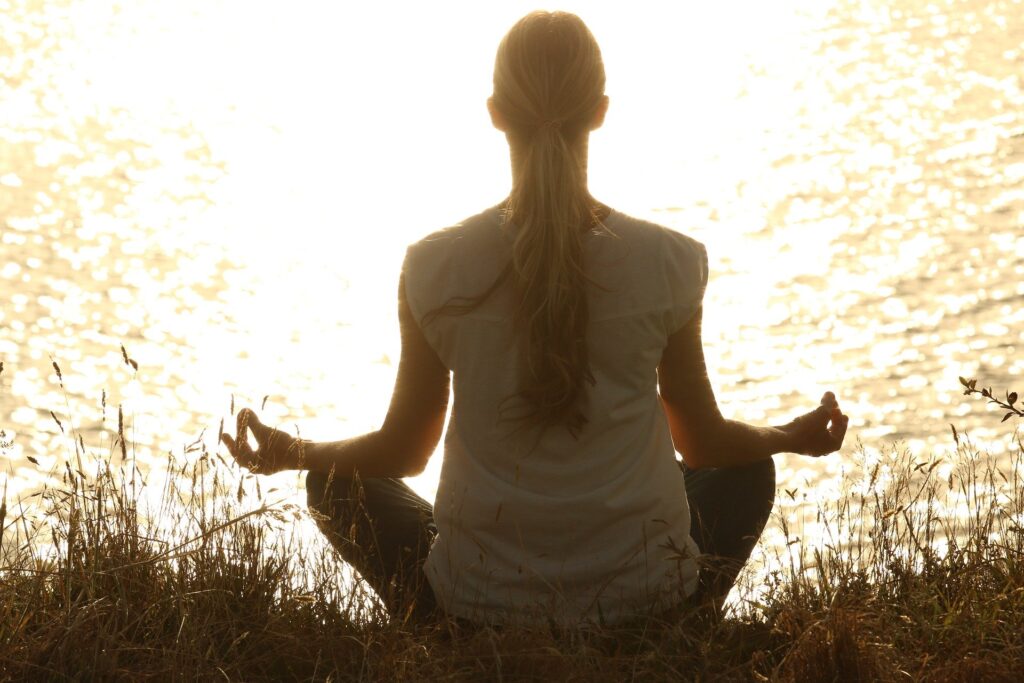Kukkatasana or Kukudasana ( कुक्कुटासन ) is also known by different names – Cockerel Pose or Rooster Pose. This asana helps to strengthen shoulders, forearms and wrists and relieve stiffness from sore hips and back muscles. Here, we’ll talk about various such health benefits, steps and precautions for performing ‘Kukkutasana’.
A Sanskrit word ‘Kukkatasana’ is the combination of two words Kukkata ( कुक्कुट ) means ‘Cockerel‘ or ‘Rooster‘ and Asana ( आसन ) means ‘posture or seat’. In this asana, legs are wrapped around the forearms in raised Padmasana, whereas hands and palms acts like the shanks & toes of a cock respectively that support entire body weight.

Kukkatasana is an advanced Ashtanga yoga pose that is mentioned in the ancient Indian texts – Hatha Yoga Pardipika, Vasista Samhita and Gheranda Samhita. This asana is a sitting arm balancing exercise which resembles as the shape of the body of a cockerel in its final position.
Kukkatasana is a challenging exercise that demands strong coordination of core muscles and hand-wrist muscles. This posture stimulates abdominal organs like kidneys, intestinal walls and lower body. Moreover, it helps to induce deep relaxation of mind and body
Steps to practice Kukkutasana (Cockerel Pose)
Following are the step-by-step instructions to follow for the practice of Kukkutasana (Cock Pose):
Step 1 :
- To begin the pose, sit cross-legged on the floor in Padmasana i.e. the lotus pose.
Step 2 :
- Now, position both arms in between the gap of your thighs and calves muscles.
Step 3 :
- Touch ground with the palms by pushing arms through the legs up to the elbows.
Step 4 :
- Spread your fingers pointing forward & balance your body weight on your hands.
Step 5 :
- Bring shoulders down & pull lower belly as you squeeze lower ribs to each other.
Step 6 :
- Make sure your back and head are aligned in one line and your arms are straight.
Step 7 :
- To maintain balance and focus, keep the eyes fixed on any object in front of you.
Step 8 :
- Breathe normally and hold the pose for 60 seconds or as per your body comfort.
Step 9 :
- To release, bring the hips down, unlock the arms from the posture while exhaling.
Step 10 :
- You may relax in the Staff Pose by stretching legs or simply sit back in Lotus Pose.
Step 11 :
- Reverse the position & repeat all the steps by alternating your legs in Padmasana.
Modifications and Variations
To deepen experience during Kukkutasana, try following modifications and find a variation that works for you :
Urdhva Kukkutasana and Parsva Kukkutasana are Two Major Variations of Kukkutasana or The Cockerel Pose.
- You can place a bolster in front of you to hold, If you’re unable to balance yourself while raising body off the floor.
- To avoid putting too much pressure on the wrists and elbows, keep your back and the neck inclined forward a bit.
- You may also place a folded blanket on your thighs if you don’t have a good grip of legs in cross-legged position.
Precautions and Contraindications
- Women should avoid practice of Kukkutasana during their menstrual cycle and pregnancy.
- Avoid this pose, if you’re suffering from knee pain, arms pain, shoulders pain, back pain etc.
- People with weak or injured wrist, elbow, knee or shoulder muscles should avoid this pose.
- Avoid this asana if you are suffering from Carpal Tunnel syndrome, Arthritis and Spondylitis.
- People with high blood pressure, heart or lung problems should avoid doing Kukkutasana.
- Those who are suffering from migraine, headache, sciatica & hernia should avoid this pose.
- Avoid this pose, if you’re suffering from prolapse, ulcers, enlarged spleen, osteoporosis etc.
- If you’re suffering from stomach diseases such as acidity & nausea should avoid this asana.
Benefits of Kukkutasana – The Cockerel Pose
Following are the health benefits of Kukkutasana – The Cockerel Pose that you would attain with its regular practice :
This pose helps to improve digestion, flexibility, self awareness, sub–consciousness, blood flow & relieves body pain.
1. Kukkutasana Strengthens Your Muscles
- Kukkutasana stretches and strengthens stomach, spine, chest, shoulders, elbows, wrists, legs & hips muscles.
- Moreover, it also reduces risk of any injury, prevents pain and relieves weakness of arms, shoulders, hands etc.
Also Read :
2. Kukkutasana Improves Your Heart Health
- Daily practice of Kukkutasana helps to relieve tiredness by improving the blood flow to different parts of body.
- Apart from this, it also help to lower blood pressure and reduce risk of stroke, heart attack, high cholesterol, etc
Also Read :
3. Kukkutasana Improves Your Reproductive Health
- Kukkutasana aids to enhance the sensual performance & virility of the body by stimulating reproductive organs.
- In addition, regular practice of Kukkutasana is highly beneficial for women in relieving the menstrual discomfort.
Also Read :
4. Kukkutasana Improves Your Digestion
- Rooster Pose aids to stimulate the digestive system & prevent issues like constipation, bloating and indigestion.
- Plus, it also offers a massaging effect on the digestive organs and improves the functioning of liver and kidneys.
Also Read :
5. Kukkutasana Reduces Excess Belly Fat
- Kukkutasana puts considerable amount of pressure on abdominal muscles that help us reduce excess belly fat.
- Plus, this asana also regulates metabolism, strengthens abdominal muscles and supports other internal organs.
Also Read :
6. Kukkutasana Stimulates Muladhara Chakra
- Kukkutasana assists to activate Muladhara Chakra which helps to awaken Kundalini Shakti or the Primal Energy.
- This Chakra helps to stabilize emotions, alleviates mood, reduces unnecessary desires and rejuvenate your body,
Also Read :
7. Kukkutasana Improves Your Mental Health
- The Rooster Pose assists to promote sense of stability, concentration, self-confidence and psychological balance.
- Plus, it also aids to induce sleep and reduce stress, anxiety, restlessness by releasing pent-up negative emotions.
Also Read :
Preparatory Poses
- Sukhasana
- Padmasana
- Tulasana
- Bakasana
- Tadasana
- Ujjayi Pranayama
- Surya Namaskar
Follow Up Poses
- Gupta padmasana
- Urdhva padmasana
- Sarvangasana
- Bhujangasana
- Sirsasana
- Savasana
- Makarasana
Tips for Beginners
- It’s highly advisable to perform the Cockerel pose under the guidance of a certified yoga teacher.
- To find balance in Kukkutasana, fix your eyesight to a point on the ground as you raise your body.
- You should always maintain the gap at least two-four hour between your practice and your meal.
- If you have excess fat or hairy skin, then you may some apply oil on the forearms and inner thighs.
Conclusion
Kukkutasana offers numerous health benefits – improves production of digestive juices and enzymes, opens up the chest and makes it broader, reduces of risk of high calories, diabetes, osteoporosis, improves immune system etc.
We really hope that this article would be useful guide for your practice of Kukkutasana. At the end, we would like to invite you to please share your thoughts, views and suggestions on this blog in the comment section down below.
Also Read :
FAQs Related to Kukkutasana and its Benefits
Why do Kukkutasana considered as a beneficial full body workout ?
Regular practice of Kukkutasana exerts immense pressure on wrists, forearms, shoulders and knee joints that help to improve your bodily balance, flexibility, strength, willpower, mobility and stability. It tones your biceps, triceps, lower back, core muscles, gluteus, perineum and pelvic muscles.
Do the practice of Kukkutasana really improve one's mental health ?
Kukkutasana is an excellent pose that calms your mind, sharpen focus, stimulate the central nervous system, regulate adrenal gland and surge endorphins (natural painkiller) in brain. Plus, it also aids to increase your overall well-being and endurance level.



